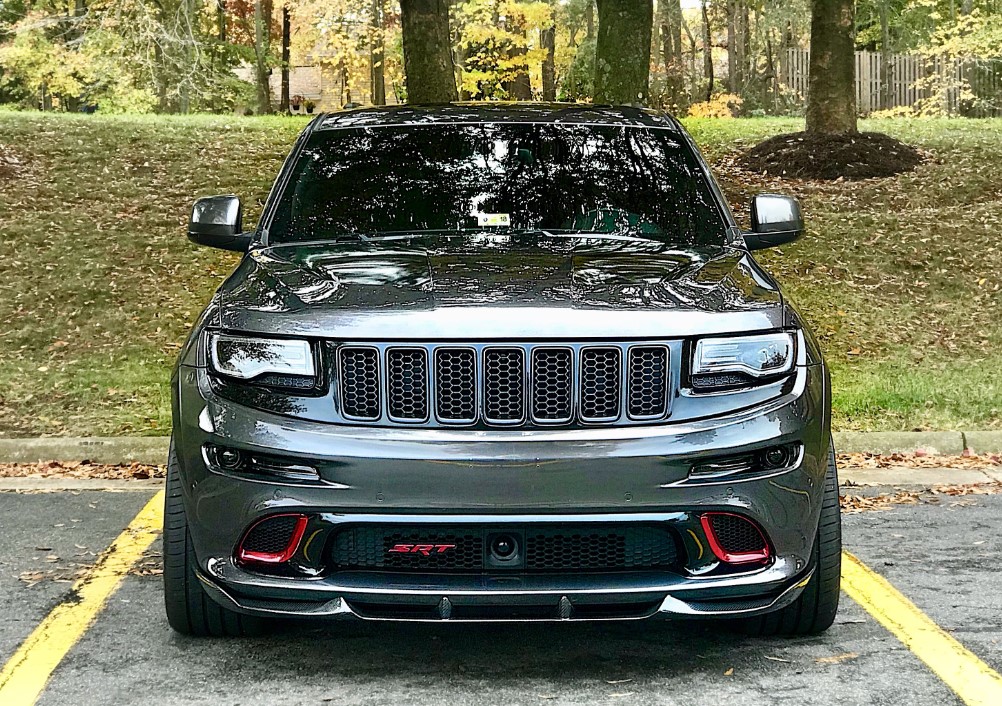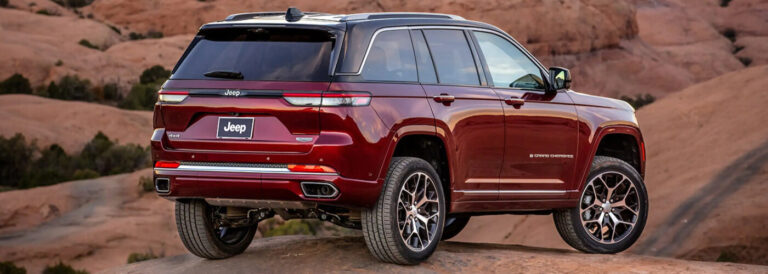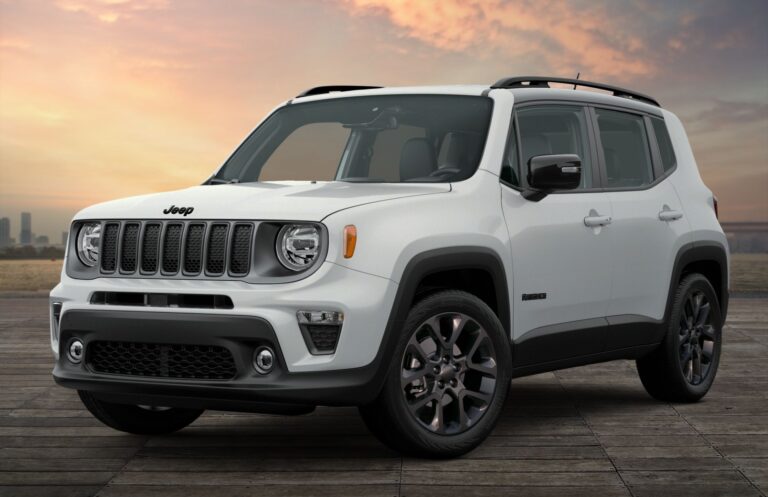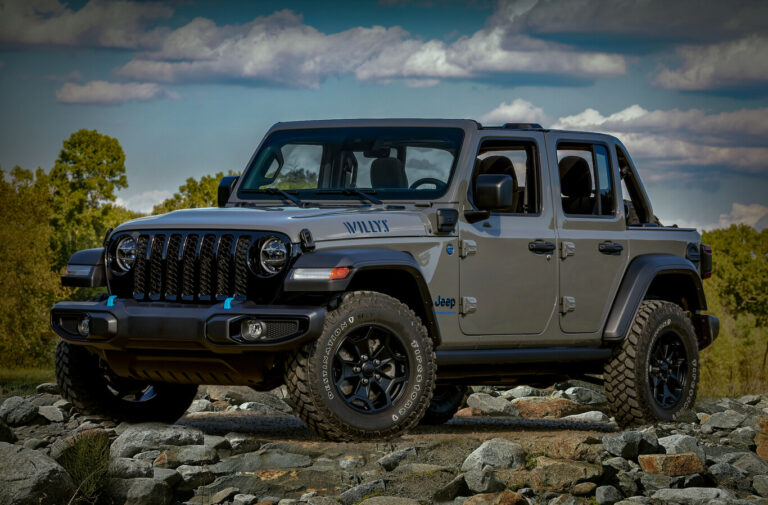Jeep Grand Cherokee SRT8 Price: A Comprehensive Guide to Understanding Its Value
Jeep Grand Cherokee SRT8 Price: A Comprehensive Guide to Understanding Its Value jeeps.truckstrend.com
The roar of a HEMI V8 engine, the aggressive stance of a lowered suspension, and the undeniable utility of an SUV – these are the hallmarks of the Jeep Grand Cherokee SRT8. A vehicle that defies simple categorization, it’s a high-performance machine wrapped in a practical package, delivering thrills that belie its family-hauling capabilities. For enthusiasts and prospective buyers alike, understanding the "Jeep Cherokee SRT8 price" is a complex, multi-faceted topic. While the specific nomenclature often causes confusion – the performance variant is the Jeep Grand Cherokee SRT8, not just a "Cherokee" – its value proposition is a dynamic interplay of power, prestige, and practicality.
This comprehensive guide will delve deep into the world of the Grand Cherokee SRT8, exploring the factors that influence its price, navigating the used market, and providing crucial insights into the total cost of ownership. Whether you’re dreaming of owning one or looking to sell, this article will equip you with the knowledge to make informed decisions.
Jeep Grand Cherokee SRT8 Price: A Comprehensive Guide to Understanding Its Value
Understanding the Jeep Grand Cherokee SRT8
Before we dive into pricing, it’s essential to understand what makes the Grand Cherokee SRT8 such a unique vehicle. Born from Jeep’s Street and Racing Technology (SRT) division, this isn’t your average family SUV. It’s engineered for performance, designed to conquer not just off-road trails (though its AWD system is robust, its primary focus shifts to tarmac), but also drag strips and winding roads.
Key Characteristics:
- Engine: The heart of the beast is a naturally aspirated HEMI V8.
- WK1 Generation (2006-2010): Featured a 6.1-liter HEMI producing 420 horsepower and 420 lb-ft of torque.
- WK2 Generation (2012-2017): Upgraded to a 6.4-liter (392 cubic inch) HEMI, delivering 470-475 horsepower and 465 lb-ft of torque.

- Drivetrain: Full-time all-wheel drive (AWD) system optimized for traction and performance.
- Brakes: High-performance Brembo brakes are standard, providing serious stopping power.
- Suspension: Sport-tuned suspension, lowered ride height, and stiffer components ensure sharp handling.
- Styling: Aggressive body kits, unique wheels, and dual exhaust tips differentiate it from standard Grand Cherokees.

The Grand Cherokee SRT8 blends the utility of an SUV with the raw power and handling of a muscle car, creating a segment of its own. This unique blend is precisely what makes its pricing so interesting and, at times, unpredictable.
Key Factors Influencing Grand Cherokee SRT8 Pricing
The price of a used Jeep Grand Cherokee SRT8 isn’t static; it fluctuates based on a multitude of factors. Understanding these elements is crucial for both buyers and sellers to accurately assess its market value.
- Model Year and Generation: This is perhaps the most significant factor.
- WK1 (2006-2010): These earlier models are generally more affordable, representing the entry point into SRT8 ownership. Their prices are more susceptible to mileage and condition.
- WK2 (2012-2017): The second-generation SRT8s offer more power, improved interior technology, and modern safety features, commanding significantly higher prices.
- Condition (Mechanical, Interior, Exterior): For a performance vehicle, condition is paramount.
- Mechanical: A well-maintained engine, transmission, and drivetrain are vital. Any major mechanical issues (e.g., engine knocking, transmission slips) will drastically reduce value.
- Interior: Wear and tear on seats, dashboards, and electronics. Pristine interiors fetch higher prices.
- Exterior: Paint condition, dents, scratches, rust (especially in older models or colder climates), and wheel damage all impact value.
- Mileage: As with any used car, lower mileage generally translates to a higher price. However, for performance vehicles, extremely low mileage can sometimes indicate it was a garage queen, which might be a plus for collectors. High mileage, conversely, will depress the price.
- Maintenance History and Records: This is exceptionally important for an SRT8. A complete and verifiable service history, especially showing regular oil changes with the correct synthetic oil, transmission fluid changes, and brake maintenance, significantly adds value and peace of mind. Lack of records can be a major red flag.
- Optional Features and Packages: While the SRT8 comes well-equipped, certain optional extras can slightly boost its value, such as:
- Panoramic sunroof
- Premium sound systems (e.g., Harman Kardon)
- Advanced safety packages
- Specific wheel designs or finishes
- Geographic Location: Market demand can vary regionally. Vehicles in drier climates often show less rust. Areas with a strong enthusiast community might see slightly higher prices.
- Modifications: This is a double-edged sword.
- Professional, Desirable Mods: Performance upgrades (e.g., quality exhaust, cold air intake, minor tuning) from reputable brands can sometimes add value, especially if documented.
- Amateur or Extreme Mods: Poorly installed aftermarket parts, extensive engine tuning without proper support, or significant cosmetic alterations can significantly detract from value. Many buyers prefer stock or lightly modified examples.
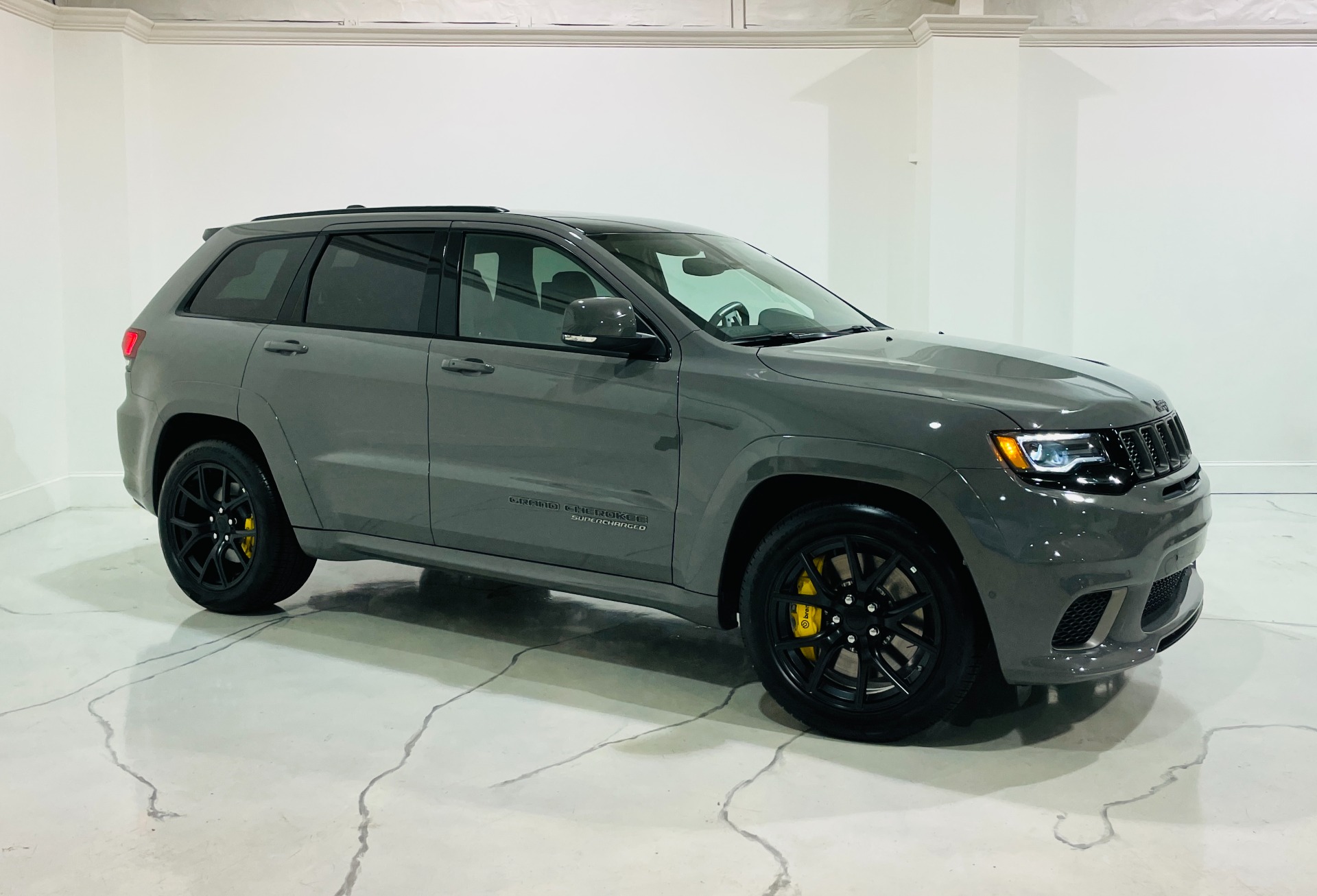
The New vs. Used Grand Cherokee SRT8 Price Landscape
It’s crucial to clarify that new Grand Cherokee SRT8 models are no longer produced. The WK2 generation of the SRT8 concluded around 2017, largely being superseded by the even more potent (supercharged) Grand Cherokee Trackhawk for subsequent model years (2018 onwards). Therefore, any discussion of "new" pricing refers to its historical MSRP.
Historical New Pricing (MSRP – Approximate):
- WK1 (2006-2010): Original MSRP typically ranged from $39,995 to $47,995.
- WK2 (2012-2017): Original MSRP typically ranged from $60,000 to $70,000+, depending on the year and options.
Current Used Market Dynamics:
The market for used Grand Cherokee SRT8s is vibrant, but prices vary wildly.
- WK1 Generation: These are now 14-18 years old. Prices can range from $10,000 to $25,000+. Lower-end prices reflect higher mileage or poorer condition, while well-preserved, low-mileage examples command premiums.
- WK2 Generation: These are more contemporary, with better performance and features. Prices typically range from $25,000 to $50,000+. The newest, lowest mileage WK2s in pristine condition can sometimes push higher.
How to Research Used Prices:
- Online Marketplaces: Websites like AutoTrader, Cars.com, eBay Motors, and CarGurus provide a broad overview of available vehicles and their asking prices.
- Valuation Tools: Use Kelley Blue Book (KBB.com), Edmunds.com, and NADAguides.com to get estimated trade-in, private party, and dealer retail values based on year, mileage, and condition.
- Auction Sites: For unique or highly collectible examples, sites like Bring a Trailer or Cars & Bids can provide insights into what pristine examples are truly fetching.
- Forum Communities: Enthusiast forums often have classified sections and discussions about market values.
Decoding Depreciation and Resale Value
Like most high-performance vehicles, the Grand Cherokee SRT8 experiences significant initial depreciation from its original MSRP. However, its niche appeal and the fact that it’s no longer produced as a new model can stabilize or even slightly increase values for well-maintained examples over time, especially for the WK1 generation which is entering classic territory.
- WK1 Depreciation: Most of their depreciation has already occurred. Their value is now more tied to condition and mileage. Pristine, low-mileage examples might see appreciation from a collector standpoint.
- WK2 Depreciation: These are still depreciating, but at a slower rate than newer vehicles. Their value will continue to decline as they age, but their robust performance and desirable features keep them relatively strong in the used market.
Resale Value Considerations:
- Niche Market: The SRT8 appeals to a specific buyer who prioritizes performance and isn’t overly concerned with fuel economy. This targeted audience can help maintain demand.
- High Running Costs: The significant cost of ownership (fuel, insurance, maintenance) can deter some buyers, which can put downward pressure on prices.
- Competition: Newer, more technologically advanced, and often more powerful performance SUVs (including Jeep’s own Trackhawk) can draw buyers away.
Beyond the Purchase Price: Total Cost of Ownership
The purchase price of a Grand Cherokee SRT8 is just the entry fee. Owning one involves significant ongoing expenses that prospective buyers must factor into their budget.
- Fuel Consumption: This is arguably the biggest recurring cost. Both the 6.1L and 6.4L HEMI engines are thirsty. Expect single-digit city MPG (around 10-13 MPG) and low-to-mid teens on the highway (15-18 MPG). Premium fuel is usually recommended or required.
- Insurance Premiums: Due to its high performance, higher repair costs, and statistical likelihood of being involved in accidents or theft, insurance for an SRT8 is typically much higher than for a standard SUV. Factors like your age, driving record, and location will also play a role.
- Maintenance & Servicing: Performance vehicles require specialized care.
- Oil Changes: Frequent (e.g., every 5,000 miles) and require specific synthetic oils, which are more expensive.
- Brakes: Brembo brake pads and rotors are significantly more expensive than standard SUV components and wear faster due to the vehicle’s weight and power. A full brake job can easily run into thousands of dollars.
- Tires: The SRT8 uses large, high-performance tires (often 20-22 inches) that are expensive to replace (often $300-$500+ per tire) and wear quickly, especially with enthusiastic driving.
- Fluids: Differential fluids, transmission fluids, and coolant changes need to be done at recommended intervals and may require specific, higher-grade products.
- Potential Repairs: While generally robust, high-mileage or neglected SRT8s can face expensive repairs. Common areas of concern might include:
- Transmission issues (especially if abused)
- Suspension components (bushings, shocks)
- Power steering pump
- Exhaust system (if aftermarket)
- Electronic gremlins (less common, but possible with age)
Practical Advice for Prospective Buyers
Acquiring a Grand Cherokee SRT8 can be a rewarding experience, but it requires diligence.
- Thorough Research is Paramount: Understand the differences between WK1 and WK2 generations. Research common issues for the specific model year you’re considering.
- Get a Comprehensive VIN Check: Use services like CarFax or AutoCheck to review the vehicle’s history, including accidents, service records, ownership changes, and title issues.
- Mandatory Pre-Purchase Inspection (PPI): Do NOT buy an SRT8 without a PPI from an independent, reputable mechanic who specializes in performance vehicles or Jeeps/Chrysler products. This will uncover potential mechanical problems, bodywork issues, and provide an unbiased assessment of its condition.
- Budget for More Than Just the Purchase Price: Seriously consider the total cost of ownership. Set aside a significant emergency fund for unexpected repairs.
- Test Drive Thoroughly: Pay attention to engine noises, transmission shifts, brake feel, suspension behavior, and all electronic functions. Drive it at various speeds and conditions.
- Negotiate Wisely: Use the PPI findings, market research, and any identified imperfections to negotiate a fair price. Don’t be afraid to walk away if the deal doesn’t feel right.
- Consider the Seller: Private sellers might offer lower prices, but dealers often provide some limited warranty or reconditioning. Evaluate the seller’s transparency and willingness to provide information.
Potential Challenges and Solutions
While exhilarating, owning an SRT8 can present some challenges.
- Challenge: Finding a Well-Maintained Example: Many SRT8s were driven hard, and some were neglected.
- Solution: Be patient, expand your search radius, and prioritize vehicles with comprehensive service records and a clean PPI. Look for signs of enthusiast ownership.
- Challenge: High Running Costs: The fuel, insurance, and maintenance bills can be daunting.
- Solution: Create a detailed budget. Consider DIY for minor maintenance if you have the skills. Shop around for insurance. Accept that this is part of owning a high-performance vehicle.
- Challenge: Identifying Hidden Issues: Performance vehicles can hide problems well, especially if sellers are dishonest.
- Solution: The PPI is your best defense. Also, ask specific questions about the vehicle’s history and any known issues. Listen for unusual noises during the test drive.
- Challenge: Parts Availability and Specialized Service: While many parts are shared with regular Grand Cherokees, SRT-specific components can be harder to find or more expensive.
- Solution: Research parts availability for common wear items. Build a relationship with a trusted mechanic who understands performance vehicles.
Jeep Grand Cherokee SRT8 Estimated Used Price Table
The following table provides approximate used price ranges for the Jeep Grand Cherokee SRT8. Please note: These are estimates for vehicles in good to excellent condition and can vary significantly based on the factors discussed above (mileage, specific options, maintenance history, geographic location, and market fluctuations).
| Model Year | Generation | Engine | Horsepower | Original MSRP (Approx.) | Estimated Used Price Range (Good/Excellent Condition) | Key Notes |
|---|---|---|---|---|---|---|
| 2006-2010 | WK1 | 6.1L HEMI | 420 HP | $39,995 – $47,995 | $10,000 – $25,000+ | First generation, raw performance, older tech, more susceptible to age/mileage. Pristine examples command higher end. |
| 2012-2013 | WK2 | 6.4L HEMI | 470 HP | $60,000 – $65,000 | $25,000 – $35,000+ | Early WK2, significant power bump, improved interior, more modern. |
| 2014-2017 | WK2 | 6.4L HEMI | 475 HP | $65,000 – $70,000+ | $35,000 – $50,000+ | Later WK2 models, slight power increase, more refined tech, closer to the end of production. Top-tier examples can exceed $50k. |
Disclaimer: These prices are highly generalized and serve as a starting point. Always conduct your own research using current market data and professional valuations.
Frequently Asked Questions (FAQ)
Q1: Is the Jeep Cherokee SRT8 the same as the Grand Cherokee SRT8?
A1: No. While often confused, the high-performance model is officially the Jeep Grand Cherokee SRT8. The standard "Cherokee" is a smaller SUV that did not receive an SRT variant. This article focuses on the Grand Cherokee SRT8.
Q2: Why are used SRT8s still relatively expensive despite their age?
A2: Several factors contribute: their limited production numbers, the powerful HEMI engine, the blend of SUV practicality with sports car performance, and the strong brand loyalty to Jeep. Well-maintained examples hold their value well due to their unique appeal.
Q3: What’s the fuel economy like for a Grand Cherokee SRT8?
A3: It’s notoriously poor. Expect around 10-13 MPG in the city and 15-18 MPG on the highway for both generations. This is a significant ongoing cost to consider.
Q4: What are common problems to look out for in a used Grand Cherokee SRT8?
A4: Common areas include brake wear (due to power and weight), suspension component wear, transmission issues (especially if the vehicle was abused), and potential electrical gremlins in older models. A thorough pre-purchase inspection is crucial.
Q5: Can I daily drive a Grand Cherokee SRT8?
A5: Yes, many owners use them as daily drivers. They offer comfortable interiors and ample space. However, be prepared for the high fuel costs, firm ride quality, and expensive maintenance associated with a performance vehicle.
Q6: How does the Grand Cherokee SRT8 compare to the newer Grand Cherokee Trackhawk?
A6: The Trackhawk, introduced in 2018, is essentially the spiritual successor to the SRT8. The key difference is the engine: the Trackhawk features a supercharged 6.2-liter HEMI (the Hellcat engine) producing 707 horsepower, significantly more than the SRT8’s naturally aspirated 6.4L HEMI (475 HP). The Trackhawk is much faster, more expensive to buy, and has even higher running costs.
Concluding Summary
The Jeep Grand Cherokee SRT8 represents a fascinating intersection of SUV versatility and raw, unadulterated performance. Understanding its price involves more than just looking up a number; it requires a deep dive into its generation, condition, maintenance history, and the broader market dynamics. While no longer produced new, its presence in the used market remains strong, offering a compelling blend of power and practicality for those who appreciate its unique character.
Prospective buyers must be diligent in their research, prioritize pre-purchase inspections, and realistically budget for the significant ongoing costs of ownership. For the right enthusiast, the thrill of commanding a HEMI-powered SUV that can out-accelerate many sports cars is an experience well worth the investment. Owning a Grand Cherokee SRT8 is not just about acquiring a vehicle; it’s about embracing a lifestyle of high performance, knowing that with great power comes the responsibility of thorough care and a well-planned budget.
